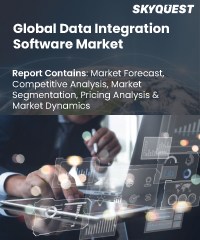
Report ID: SQMIG45F2094

Report ID:
SQMIG45F2094 |
Region:
Global |
Published Date: February, 2024
Pages:
157
|
Tables:
62 |
Figures:
65
Data Integration Software Market Drivers
Increasing Adoption of Cloud Computing:
Big Data and Analytics Initiatives:
Data Integration Software Market Restraints
Data Security and Privacy Concerns
Complexity and Integration Challenges
Our industry expert will work with you to provide you with customized data in a short amount of time.
REQUEST FREE CUSTOMIZATIONWant to customize this report? This report can be personalized according to your needs. Our analysts and industry experts will work directly with you to understand your requirements and provide you with customized data in a short amount of time. We offer $1000 worth of FREE customization at the time of purchase.

Report ID: SQMIG45F2094